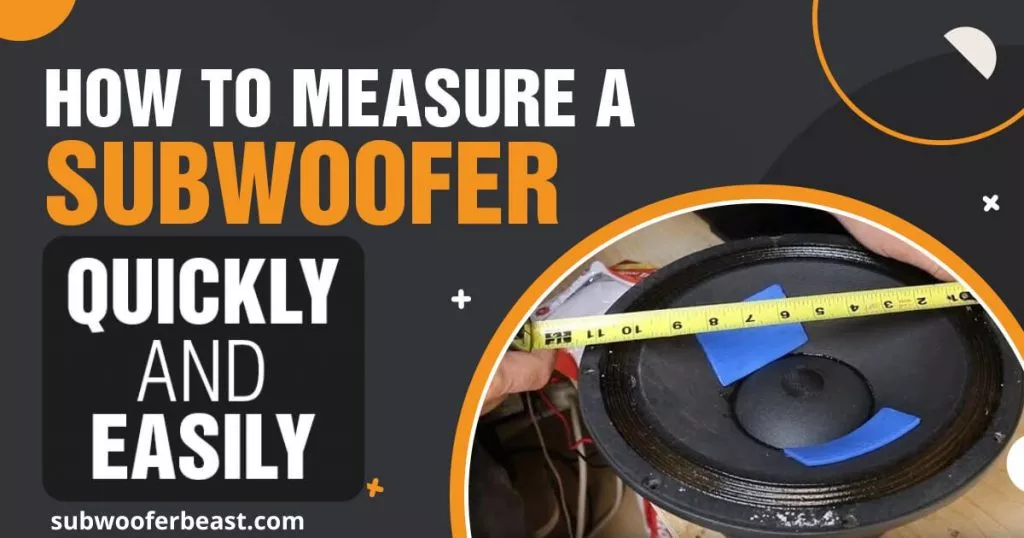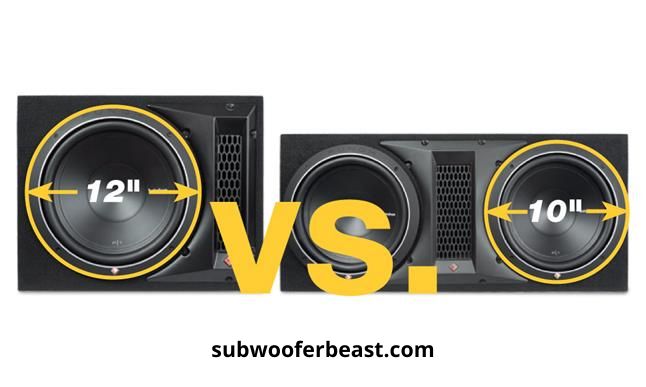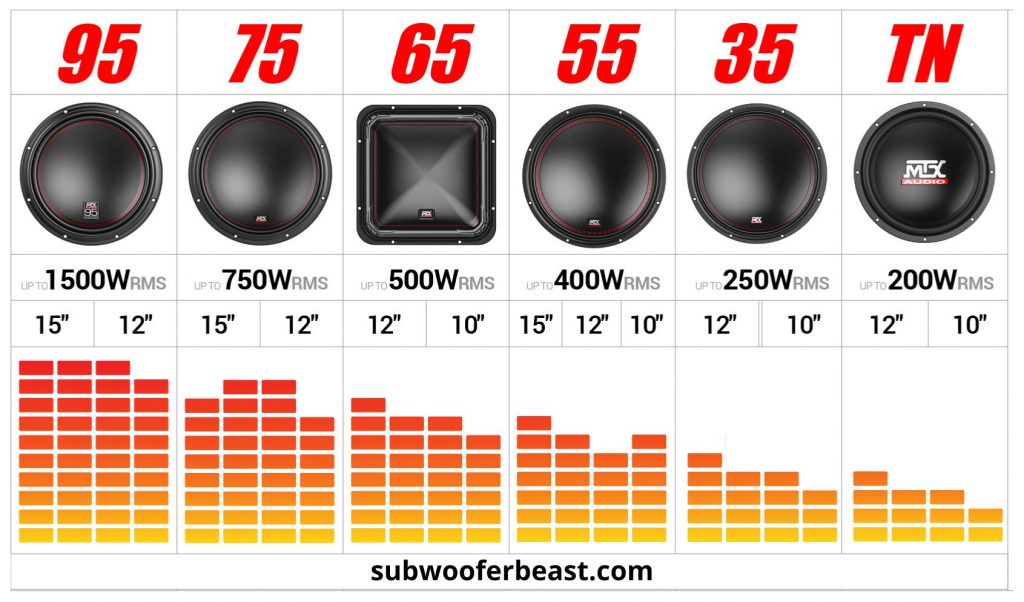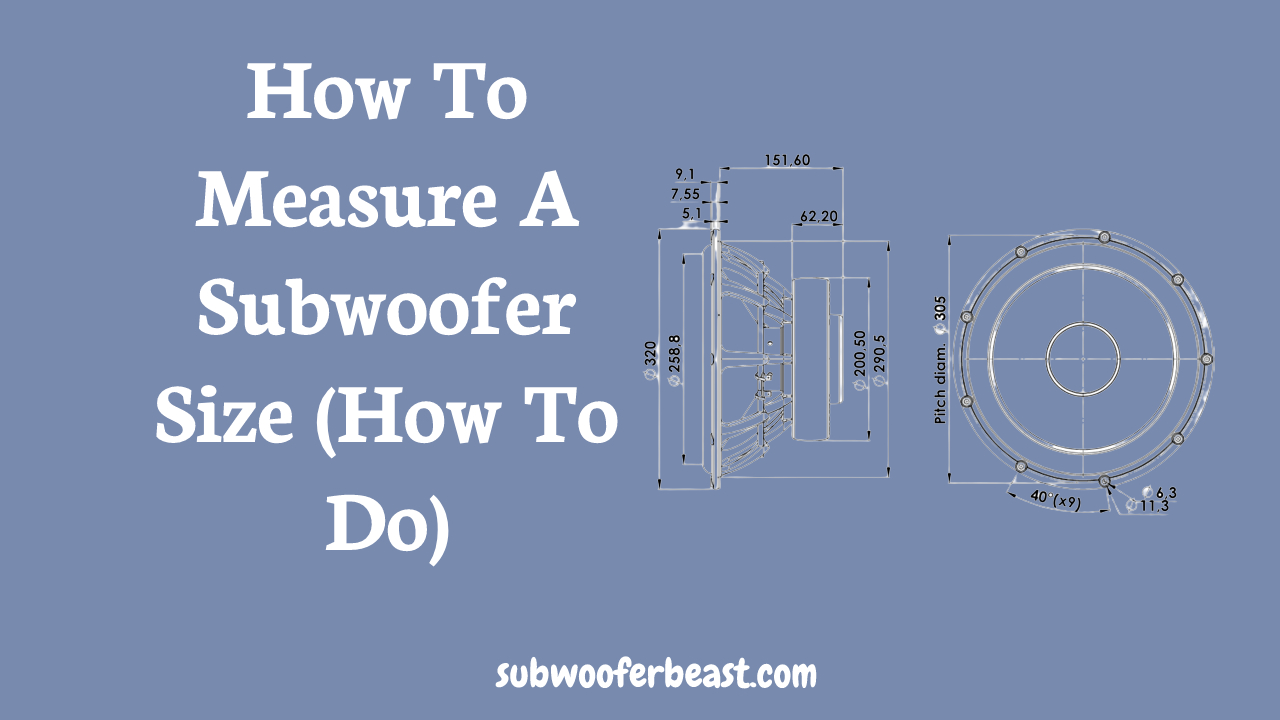The size of a subwoofer can be a Huge and big factor to analyse what you can buy. Knowing how to measure a subwoofer will help you make the right selection of subwoofer. How To Measure A Subwoofer Size (How To Do).
There are several ways to measure a subwoofer, and every method has cons and pros. The most common way to measure a subwoofer is by its displacement.
Contents
How To Measure A Subwoofer Size

When you’re shopping for a subwoofer, the size is an important consideration. You want to make sure the Best Car Subwoofer is big enough to deliver the bass you desire, but not so big that it takes up too much space.
Here are three ways to measure a subwoofer size:
What affects subwoofer size?

Best Subwoofers are a critical part of any sound system, but what factors affect their size? The size and power of the amplifier, the size of the room, and the type of music being played all play a role in how big a subwoofer needs to be. Larger rooms require larger subwoofers to achieve the desired level of bass. The power of the amplifier also affects how large a subwoofer needs to be.
A more powerful amplifier will need a larger subwoofer to handle the increased power. The type of music being played also has an impact on subwoofer size. Bass-heavy music requires a larger subwoofer than music with less bass.
What are the different sizes of subwoofers?

Subwoofers are a type of loudspeaker that is designed to produce low-pitched audio frequencies, typically from around 20 Hz to 200 Hz. There are a variety of different sizes and types of subwoofers on the market, each with its own unique set of features and benefits. One important consideration when purchasing a subwoofer is the size of the enclosure in which it will be installed. There are three main sizes of subwoofer enclosures: sealed, ported, and bandpass.
Sealed enclosures are airtight and have the least amount of bass extension, while ported enclosures have tuned ports that allow for more bass extension but also produce more distortion. Bandpass enclosures have two chambers: one for the woofer and one for the port. This type of enclosure produces the most distortion but also has the highest amount of bass output.
Which subwoofer size is best for me?

There is no one-size-fits-all answer to the question of which subwoofer size is best for you. It depends on your specific needs and preferences. If you want maximum bass performance and are willing to sacrifice some space, then a larger subwoofer might be a good choice for you.
But if you’re limited on space or want something that won’t take up too much room, then a smaller subwoofer may be a better option. Ultimately, it’s up to you to decide which size is right for you.
Conclusion
In conclusion, when measuring a subwoofer, be sure to take into account the size of the enclosure and the wattage. Also, remember that a subwoofer’s size is not the only factor that determines its sound quality. The type of enclosure, the amplifier, and the wiring all play a role in how your subwoofer sounds. So be sure to do your research and select the right subwoofer for your needs. Thanks for reading!

